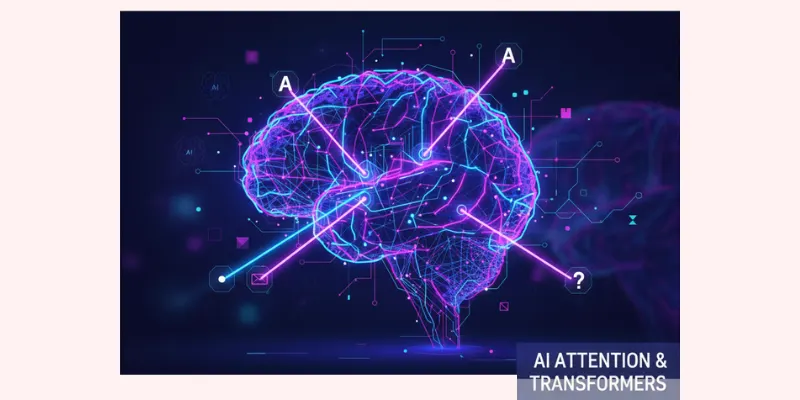
In the past few years, Artificial Intelligence (AI) has come a long way. The transformer architecture is one of the most important steps forward in this growth. This powerful model has revolutionized how machines understand language, images, and even audio. If you’re interested in mastering these concepts, an Artificial Intelligence Course in Trivandrum at FITA Academy can provide hands-on training. At the heart of the transformer is a concept known as the attention mechanism.
In this blog post, we’ll break down what attention mechanisms are, how they work in the transformer architecture, and why they are so important in the world of AI and machine learning.
What Is an Attention Mechanism?
An attention mechanism is a technique that enables AI models to concentrate on the most pertinent aspects of the input while generating predictions. It mimics how humans pay attention to certain details while ignoring others.
For example, when reading a sentence, we do not process all words equally. Our brain focuses more on the words that are most relevant to understanding the meaning. In machine learning, attention enables a model to assign varying significance to different components of the input according to their relevance.
This process is especially useful in tasks like language translation, question answering, and text summarization, where understanding context is key. If you want to learn these advanced AI techniques, enrolling in an Artificial Intelligence Course in Kochi can help you gain practical skills and expert guidance.
The Problem with Traditional Models
Prior to the advent of transformers, recurrent neural networks and long short-term memory networks were employed for sequence processing. These models worked well for short texts but struggled with longer content. They processed information one step at a time, which made them slow and inefficient.
Moreover, these traditional models had difficulty remembering information from earlier parts of the input. As the distance between words increased, the model’s ability to understand relationships between them decreased.
This is where attention mechanisms made a huge difference.
How Attention Solves the Problem
Attention allows the model to look at all parts of the input at the same time, rather than step by step. It calculates how much each word in a sentence should influence the understanding of another word. This gives the model a way to capture context and relationships, even over long distances.
For instance, in the sentence “The cat that chased the mouse was fast,” attention helps the model understand that “cat” is the subject related to “was fast,” even though the words are far apart. To dive deeper into such AI concepts, consider joining an AI Courses in Jaipur for comprehensive learning.
This ability to connect distant words makes attention mechanisms powerful for handling complex language tasks.
Introduction to the Transformer Architecture
The transformer architecture, introduced in a paper titled “Attention Is All You Need,” is built entirely on attention mechanisms. Unlike older models, transformers do not rely on recurrence or convolution. They process entire input sequences in parallel, making them faster and more scalable.
Transformers use something called self-attention, where the model learns to relate different positions of the same input sequence to each other. This enables it to understand the full context of each word based on its surrounding words.
Each layer of the transformer applies self-attention followed by a feedforward neural network. Multiple layers are stacked together to build deep understanding. The transformer also uses positional encoding to keep track of word order, since it processes everything at once.
Why Transformers Changed the Game
The combination of attention mechanisms and the transformer design has led to major improvements in many AI tasks. It enabled the development of large language models like GPT, BERT, and others that can generate human-like text, translate languages, and even write code.
Transformers are not only used in text but also in image recognition, audio processing, and other domains. Their flexibility and efficiency make them the foundation of modern AI systems.
Attention mechanisms and the transformer architecture have redefined what is possible with artificial intelligence. By allowing models to focus on what truly matters in the input, they have improved performance, reduced limitations, and opened new doors for innovation. To delve into these innovative technologies, signing up for AI Courses in Lucknow can equip you with the expertise and understanding required to succeed.
As AI continues to evolve, understanding these core concepts is essential for anyone interested in machine learning and natural language processing. Whether you are a beginner or an experienced developer, attention and transformers are concepts worth exploring deeply.
Also check: The Role of GPUs and TPUs in AI Training
